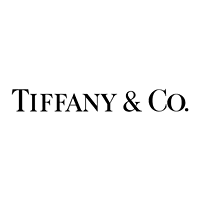the luxury brand dilemma
Within a month of each other, two articles appeared in BusinessWeek about luxury brands. The articles, about Coach  and Tiffany & Co.
and Tiffany & Co.  respectively, describe how the brands are dealing with the decrease in demand due to the recession. Each has devised a strategy for lowering its prices without tarnishing its brand.
respectively, describe how the brands are dealing with the decrease in demand due to the recession. Each has devised a strategy for lowering its prices without tarnishing its brand.
That is the luxury brand dilemma, isn’t it? With The Conference Board’s Consumer Confidence Index still falling and consumer spending essentially flat, all brands are desperate to generate sales — but while some have resorted to value messaging and price promotions, these don’t seem appropriate for luxury brands. Luxury brands’ higher price/higher quality positioning — and the status which comes along with it — plays a key role in their brand image and identity. They don’t want to do anything to jeopardize their ability to command a higher price in the future.
So, what’s a luxury brand to do?!
Coach has developed a whole new product line, Poppy. Actually way back in July of 2008, the senior executives at Coach sensed the coming recession and CEO Lew Frankfort knew “Coach would need to create even more compelling reasons for consumers to shop.” At the same time, Frankfort declared, “We never go on sale.” So the company set about designing a new line of purses to meet price points approximately 20% lower than their usual $290 average.
Their development process involved predicting consumer sentiment (Reed Krakoff the brand’s creative director decided, that despite a heightened level of anxiety in the marketplace, “People are not buying safe…People want to be inspired.”), sourcing new materials and striking deals with new factories, and re-thinking the company’s financial models. Ultimately Coach introduced the new Poppy collection earlier this year and two of the bags have exceeded sales expectations.
Tiffany has taken a far more limited and less visible tack. Late last year, Tiffany decided to lower prices for engagement rings (one of its biggest sellers) by 10% — but they haven’t publicize the move. Salespeople discreetly tell customers about the reductions. The discount is positioned as a “gesture” to consumers in acknowledgment of the environment.
Other than that, the company is committed to its overall pricing strategy. Tiffany CEO Michael Kowalski says, “It’s about maintaining the long-term value of the enterprise.” Instead the company is looking at layoffs and store closings in order to manage costs and maintain profitability.
It’s too early to tell whether either or both of these approaches are the right ones. Not only do they need to stem sales declines now, but also they need to sustain the brand status in the long run. But, kudos to both companies for their willingness to assume risk and think differently and their commitment to protecting their brands in addressing the luxury brand dilemma.